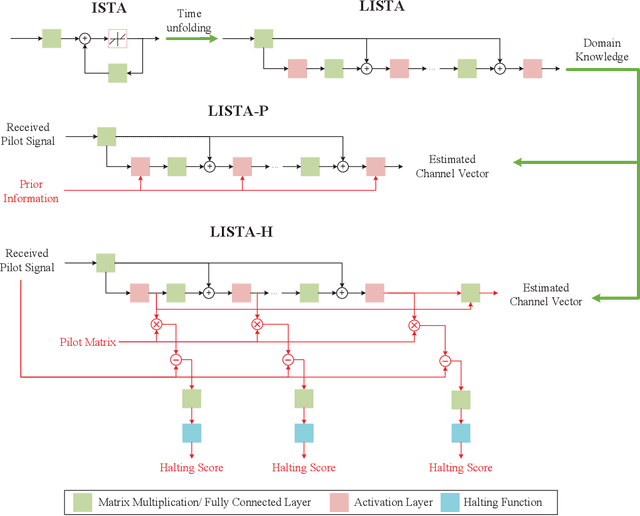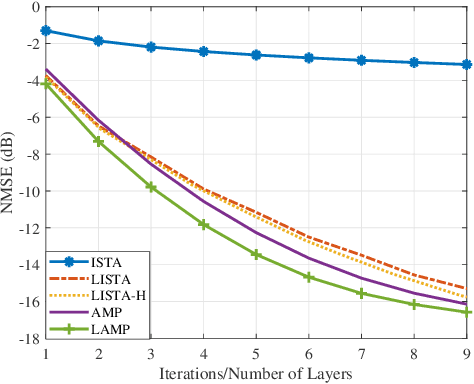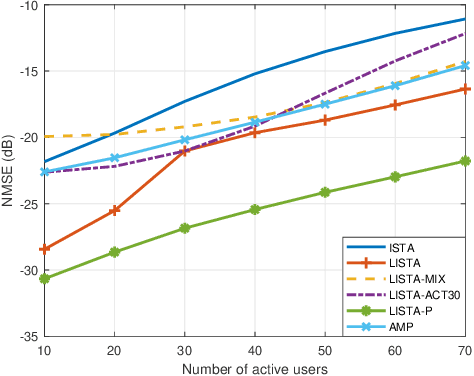Yanna Bai
Deep Learning for Asynchronous Massive Access with Data Frame Length Diversity
May 12, 2023Abstract:Grant-free non-orthogonal multiple access has been regarded as a viable approach to accommodate access for a massive number of machine-type devices with small data packets. The sporadic activation of the devices creates a multiuser setup where it is suitable to use compressed sensing in order to detect the active devices and decode their data. We consider asynchronous access of machine-type devices that send data packets of different frame sizes, leading to data length diversity. We address the composite problem of activity detection, channel estimation, and data recovery by posing it as a structured sparse recovery, having three-level sparsity caused by sporadic activity, symbol delay, and data length diversity. We approach the problem through approximate message passing with a backward propagation algorithm (AMP-BP), tailored to exploit the sparsity, and in particular the data length diversity. Moreover, we unfold the proposed AMP-BP into a model-driven network, termed learned AMP-BP (LAMP-BP), which enhances detection performance. The results show that the proposed LAMP-BP outperforms existing methods in activity detection and data recovery accuracy.
Data-Driven Compressed Sensing for Massive Wireless Access
Sep 28, 2022



Abstract:The central challenge in massive machine-type communications (mMTC) is to connect a large number of uncoordinated devices through a limited spectrum. The typical mMTC communication pattern is sporadic, with short packets. This could be exploited in grant-free random access in which the activity detection, channel estimation, and data recovery are formulated as a sparse recovery problem and solved via compressed sensing algorithms. This approach results in new challenges in terms of high computational complexity and latency. We present how data-driven methods can be applied in grant-free random access and demonstrate the performance gains. Variations of neural networks for the problem are discussed, as well as future challenges and potential directions.
Deep Learning Methods for Solving Linear Inverse Problems: Research Directions and Paradigms
Aug 11, 2020



Abstract:The linear inverse problem is fundamental to the development of various scientific areas. Innumerable attempts have been carried out to solve different variants of the linear inverse problem in different applications. Nowadays, the rapid development of deep learning provides a fresh perspective for solving the linear inverse problem, which has various well-designed network architectures results in state-of-the-art performance in many applications. In this paper, we present a comprehensive survey of the recent progress in the development of deep learning for solving various linear inverse problems. We review how deep learning methods are used in solving different linear inverse problems, and explore the structured neural network architectures that incorporate knowledge used in traditional methods. Furthermore, we identify open challenges and potential future directions along this research line.
 Add to Chrome
Add to Chrome Add to Firefox
Add to Firefox Add to Edge
Add to Edge